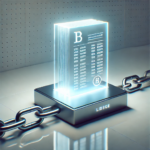Supply chains, which facilitate the movement of products from manufacturers to consumers, have historically encountered issues such as inefficiency, fraud, and a lack of transparency. Many businesses continue to use traditional tracking methods like paperwork or centralized databases, which can be slow, susceptible to manipulation, and challenging to verify across multiple entities. When records are centralized, a single error, hack, or failure can lead to significant disruptions. Companies find it difficult to fully trust the data from suppliers, complicating efforts to ensure product authenticity, safety, and ethical sourcing.
Blockchain technology is supporting this by providing a secure, decentralized, and tamper-proof method for real-time product tracking. Instead of depending on a single central authority, blockchain establishes a shared digital ledger where every transaction is permanently recorded, making it impossible to alter past records. Public blockchains like Ethereum and Polygon ensure transparency and security, while private blockchains such as Hyperledger Fabric offer businesses more control and privacy. Additionally, tools like zero-knowledge proofs (ZKPs) enable companies to verify information without disclosing sensitive details, and smart contracts automate key processes without intermediaries, reducing costs and delays
Regulations such as the U.S. FDA’s Drug Supply Chain Security Act (DSCSA) and global standards like ISO 20400 for sustainable procurement are driving companies to adopt blockchain for improved compliance and accountability. Whether it involves tracking food from farms to supermarkets, preventing counterfeit luxury goods, or securing pharmaceutical supply chains, blockchain is transitioning from an emerging technology to a real-world necessity.
Listen in to the podcast on this subject here:
The Evolution of Supply Chain Transparency
The evolution of supply chain transparency can be segmented into four key eras:
Pre-Digital Era (Pre-1980s):
Paper-based manifests, bills of lading (documents detailing cargo shipments), and manual recordkeeping led to latency-heavy reconciliation (delays in verifying records), fraud-prone systems, and data inconsistencies due to lack of cryptographic integrity.
Early Digitalization (1980s–2000s):
Introduction of Radio-Frequency Identification (RFID), Electronic Data Interchange (EDI, a standard for exchanging business documents electronically), and barcoding improved tracking granularity but still relied on centralized databases, leading to trusted third-party vulnerabilities (where an intermediary’s failure or malfeasance compromises the system).
ERP & SCM Systems (2000s–2015):
Centralized ERP suites (e.g., SAP, Oracle, Microsoft Dynamics) provided better visibility but lacked inter-organizational trust (meaning companies still had to rely on each other’s internal data without independent verification) and suffered from vendor lock-in (high switching costs when a company becomes too dependent on a particular software vendor).
Blockchain-Powered Transparency (2015–Present):
Distributed Ledger Technology (DLT, the umbrella term for blockchain and similar technologies) ends single points of trust, using Byzantine Fault Tolerant (BFT) consensus mechanisms (protocols ensuring that even if some participants act maliciously, the network stays secure) to ensure data integrity across multiple untrusted entities.
Blockchain in Action: Technical Implementations and Architectures
Food Supply Chains: Cryptographic Provenance & Interoperability
Several major food industry players, including Nestlé, Walmart, and Carrefour, are adopting IBM Food Trust, a blockchain-based platform built on Hyperledger Fabric to improve traceability and food safety. This system ensures that every transaction (e.g., farm to distributor, distributor to retailer) is cryptographically signed using Ed25519 or ECDSA, securing the provenance of food products.
Consumers can scan QR codes on Nestlé and Carrefour products to instantly verify batch metadata recorded as a SHA-256 digest stored on the blockchain. This prevents fraud and increases transparency.
Luxury Goods & Anti-Counterfeiting: NFT-Based Tokenization & Zero-Knowledge Proofs
The luxury sector has adopted blockchain to fight counterfeiting. In April 2021, global leaders in the luxury industry formed the Aura Blockchain Consortium, an initiative aimed at promoting the adoption of blockchain solutions worldwide for the luxury industry. This group now includes luxury brands globally, offering enhanced utility, transparency, and traceability. Notable members include LVMH, Prada, Cartier, Dior, Givenchy, Louis Vuitton, Mercedes-Benz, and Zegna
Additionally, De Beers’ Tracr blockchain solution employs multi-signature attestations across the diamond supply chain, guaranteeing conflict-free diamond sourcing. Recently De Beers Group announced it will provide full cycle information on the country of origin for all one carat+ De Beers-sourced rough diamonds newly registered on the Tracr platform, this aligns with the size threshold for new diamond import requirements for G7 countries.
This will enable diamond jewelry consumers at scale to engage with the unique journeys their diamonds have taken from source. The specific origin data reinforces De Beers’ commitment to consumer confidence , transparency and ethical sourcing.
Pharmaceutical Supply Chains: Tokenized Batch Management & Verifiable Computation
Pfizer, Lilly, and Johnson & Johnson are part of the MediLedger Network, which is built on Parity Substrate with GRANDPA consensus. This blockchain ensures that drug batch certificates (e.g., GS1 EPCIS data) are hashed using Keccak-256, making it virtually impossible to counterfeit drugs. As Mediledger states” The life sciences industry is uniquely complex in how pharmaceutical drugs move from manufacturers to serving patients. Additionally, there are complicated pricing and contracting relationships as well as regulatory requirements, and an infinite number of exceptions to industry standards for how trading partners do business together. Blockchain presents an opportunity where all companies have influence over data and transactions they receive from partners, which means automation can extend beyond internal systems.
Future Directions: Where Supply Chain Blockchain is Headed
The next decade will likely see a convergence of blockchain, Artificial Intelligence (AI), Internet of Things (IoT), and federated learning (a machine learning approach that trains models across decentralized devices without sharing raw data), enabling autonomous, self-optimizing supply chains.
Quantum-safe cryptographic primitives (e.g., NTRUEncrypt, a lattice-based encryption standard resistant to quantum attacks) will replace current Elliptic Curve Cryptography (ECC) and RSA (a widely used public-key cryptosystem), ensuring long-term security against Shor’s Algorithm (a quantum algorithm capable of breaking classical cryptography).
What’s Next?
In upcoming articles, we will take a deep dive into a number of topics including Hyperledger Fabric, Ethereum, zk-Rollups, smart contracts, cryptographic security, zero-knowledge proofs, and quantum-safe blockchain technology—all important topics shaping the next generation of supply chain management.
The post Unmasking the Supply Chain: How Blockchain Brings Transparency and Trust appeared first on Logistics Viewpoints.
